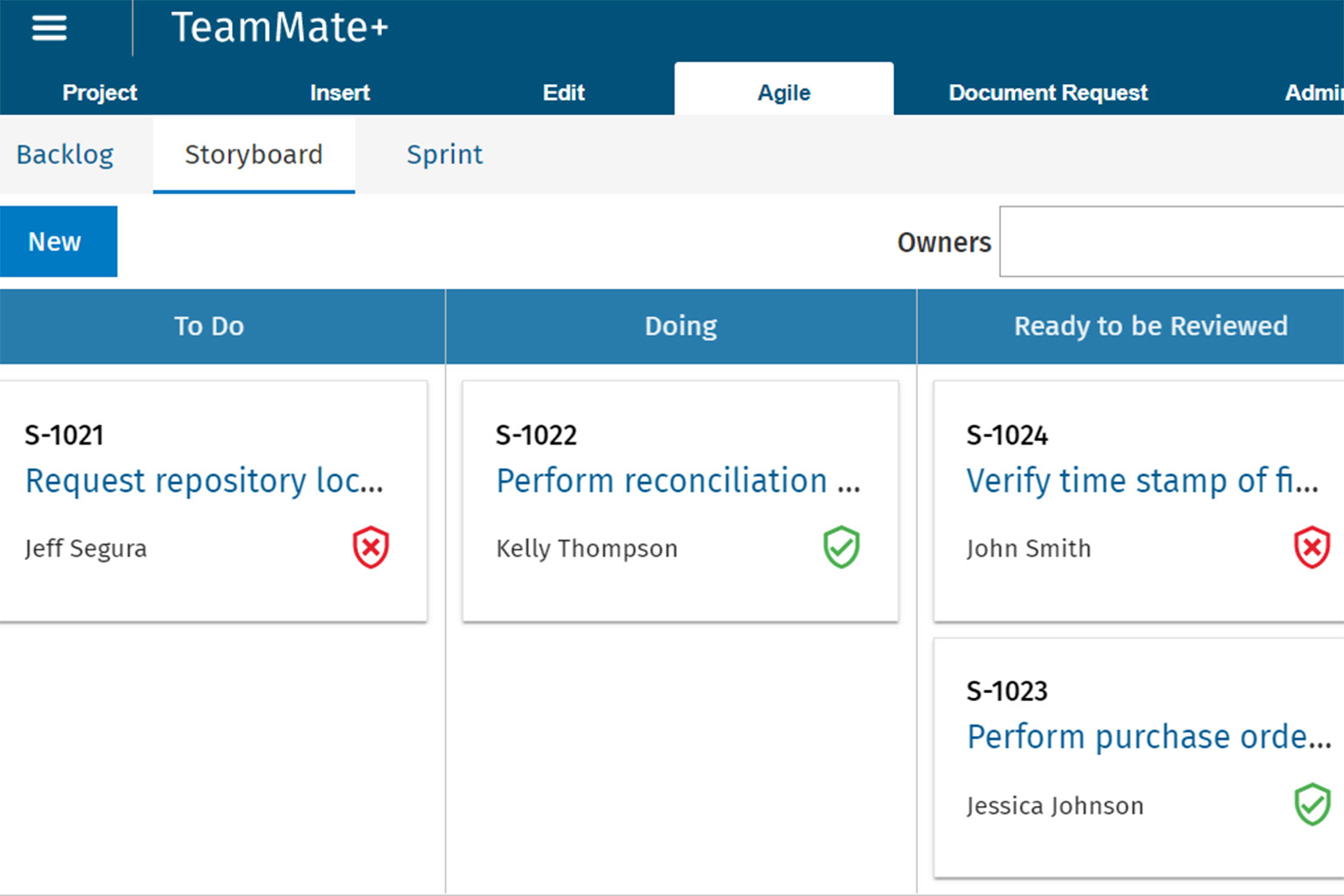Agile auditing example #3: Streamlined workflows
A third agile auditing example is using an agile audit framework to create streamlined workflows for audit team members.
For one, breaking audit tasks into more focused sprints can help an organization accomplish more overall, much as it often helps to break up any large project into manageable chunks. Using tools like a Kanban board can also streamline workflows and optimize efficiency, as everyone can gain alignment on current work. For example, if a task is blocked at the moment, it’s useful for team members to know so that they can either adapt or suggest ways to unblock a task.
Agile auditing can also streamline workflows by divvying audit teams up into smaller, more focused units. These groups can then collaborate through daily standup meetings, identify roadblocks and ultimately find workflow efficiencies as they build trust and rapport within their units.
Use agile auditing software to improve internal audit
As these agile auditing examples show, adopting an agile mindset and framework can lead to more efficient, stronger audit processes and results. To make the transition to agile easier or to get the most out of an existing agile approach, it helps to use agile auditing software.
Tools like TeamMate+ Agile Audit can help your internal audit department organize and optimize your audit practice. From creating an audit backlog to managing sprints to visualizing workflow progress via a Kanban board, TeamMate+ Agile Audit makes areas like risk management and governance more efficient and effective.
If you want to build a more agile team and improve your internal audit function, see how TeamMate+ Agile Audit can help.


